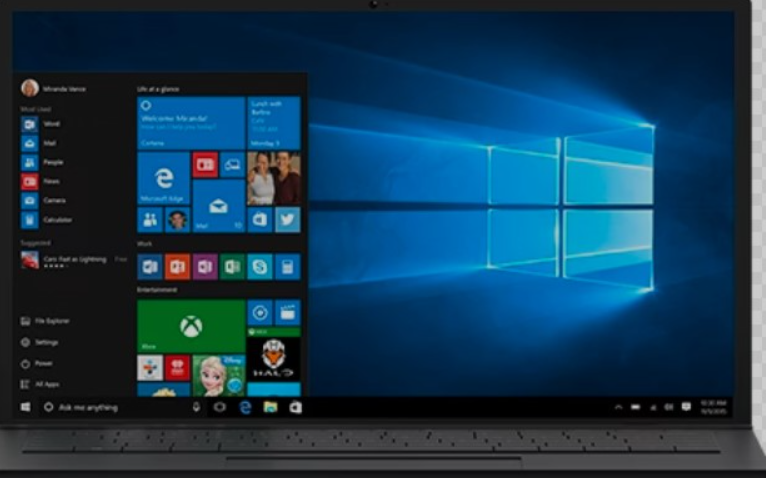Windows 10 is still up there with the most widely used operating systems since its inception. In fact, millions of users-falling anywhere on the spectrum from hippie home users to seasoned IT professionals-still use Windows 10, claiming its stability, compatibility, and simple features as their reasons.
This detailed Windows 10 guide covers what has made Windows 10 a lasting favorite among users, its important features, tips to optimize the computer for task efficiency, and frequently asked questions, relative to security, support, and performance.
Why Win10 Still Matters in 2025
Since its launch in 2015, Win10 has become a superb platform for modern computing. With the advent of Windows 11, lots of people have continued to stick to Windows 10, and for these reasons:
- Stability and performance: Tried and tested; fair stability.
- Hardware compatibility: It does work on older machines that can’t make it to Windows 11.
- Familiar interface: An easy-to-use customer experience based on the best of Windows 7 and Windows 8.
- Extended support: Microsoft will continue security updates for at least some versions till October 14, 2025.
Windows 10 continues to provide a strong and flexible platform for all types of personal, business, and educational users.
Best Features of Win10
Let’s get into the highlight features that really make Windows 10 stand out for users so many years after its release.
- Start Menu and Taskbar
The Start Menu was reintroduced on Win10, blending classic functionality with live tiles. The Taskbar still continues as a powerful tool for productivity, where you can pin your favorite apps, see which programs are running, and adjust important system settings.
- Cortana (Voice Assistant)
While it hasn’t been a big deal in the recent updates, Cortana was established in Windows 10 as the voice-activated search and reminder service feature and is still turned off by many users. However, some users still use it occasionally for small tasks.
- Virtual Desktops
Windows 10 made the way for multiple desktops that allow users to create different desktop environments tailored to different tasks. Great for staying organized and separating work-related projects from personal activities.
- Action Center
This gives you one place to get to notifications and settings for Wi-Fi, Bluetooth, brightness, and more.
- Windows Defender (renamed as Microsoft Defender)
Windows 10 carries out decent antivirus security in the box with Microsoft Defender, so the need for external security has now become scarce.
How to Make Windows 10 Faster and More Responsive
While Windows 10 is streamlined for a vast array of hardware, you can still take a few good steps to squeeze out additional performance from your machine:
✅ Disable Startup Programs
Head over to Task Manager > Startup, then turn off any programs that do not need to start during boot. This could hugely improve your loading times.
✅ Run Disk Cleanup
Disk Cleanup will let you scrub the system for all its temporary files and system junk. Search for it in the Start Menu.
✅ Update Drivers
Out-of-date drivers make for lagging or hardware failure cases. Instead of using Device Manager, however, go up to download your driver updates from the hardware manufacturer directly.
✅ Use Performance Mode
High Performance power plan may make your system more responsive, especially if it is a desktop or on laptop charged through the mains.
Windows 10 Security Tips
Security is a big concern with Win10 devices, so you have to always be conscious of:
🔒 Keep Windows Update on at all times to get new security patches.
🔒 Enable BitLocker (only for Pro) to encrypt your data.
🔒 Use Windows Hello for facial recognition or fingerprint login if supported on your device.
🔒 Don’t use any software name you can see from less-known sources. Always stick to the Microsoft Store or genuine vendors.
Microsoft Defender in Windows 10 has grown leaps and bounds in functionality and is sufficient for the needs of the majority.

Should You Upgrade to Windows 11?
The majority of users have held out for the final gut-wrenching shot of 2025 before upgrading, lest they want to continue enjoying the beauty of Windows 10, or if their device does not meet specifications for Windows 11.
Here is a quick sit-down:
- Feature Windows 10 Windows 11
- Start Menu Traditional with tiles, Centered, modern design
- Taskbar: Fully customizable, Limited customization
- System Requirements: Supports older devices. Requires newer CPUs & TPM 2.0
- Support End Date Oct 14, 2025 Ongoing
Except for cases where you use newer hardware or have a real need to utilize some specific features of Windows 11, Win10 remains a safe option in 2025.
Frequently Asked Questions About Windows 10
🔹 Is Windows 10 still safe to use?
Yes. Windows 10 is quite secure in day-to-day use, provided you receive regular security updates. Just be sure that your specific version is currently supported (for instance, version 22H2).
🔹 How to check my Windows 10 version?
Go to Settings > System > About, or type “winver” into the Windows Start Menu search bar.
🔹 Can I upgrade for free from Windows 10 to 11?
Yes, if the hardware of your PC fulfills the requirements, you can upgrade it through Windows Update. You’ll have to keep using Windows 10 until the end of support.
🔹 What happens after the end of Windows 10 support?
After 14 October 2025, there will be no updates to safeguard security. It is advisable to update before that to avert security issues.
Win10 has outlived being called one of Microsoft’s most acid-tested and user-friendly operating systems. Even in 2025, it remains the go-to choice for millions of Canadians and users around the world who value stability, flexibility, and performance.
Whether by choice or force, until support ends, it is really good to have the skill set of getting the max from Win10.




